Nine volcano ascents around the world
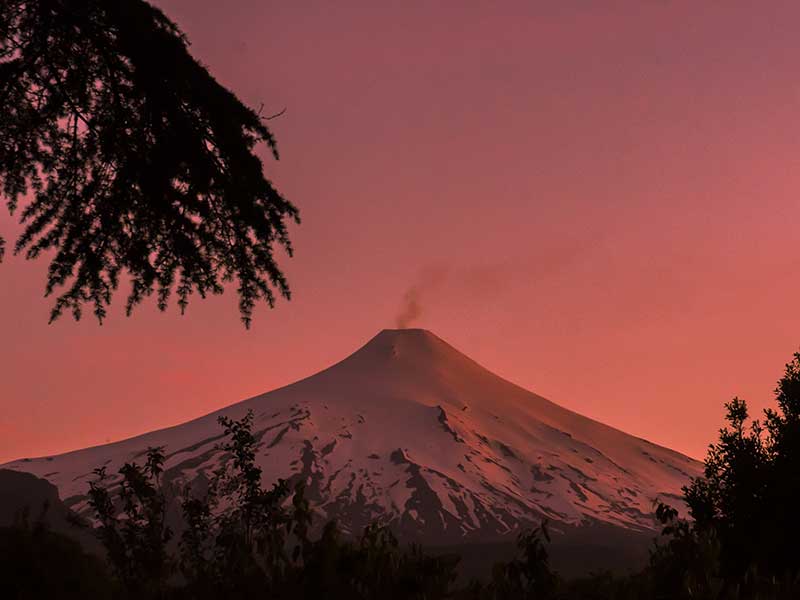
Which are the best volcanoes that offer a unique and special route? Factors to evaluate: ease of access, the views from the top of the volcano, the lava activity and, very importantly, the reward factor. In this article we will introduce you to nine interesting volcano routes around the world.
Chimborazo (6.268m): Ecuador "
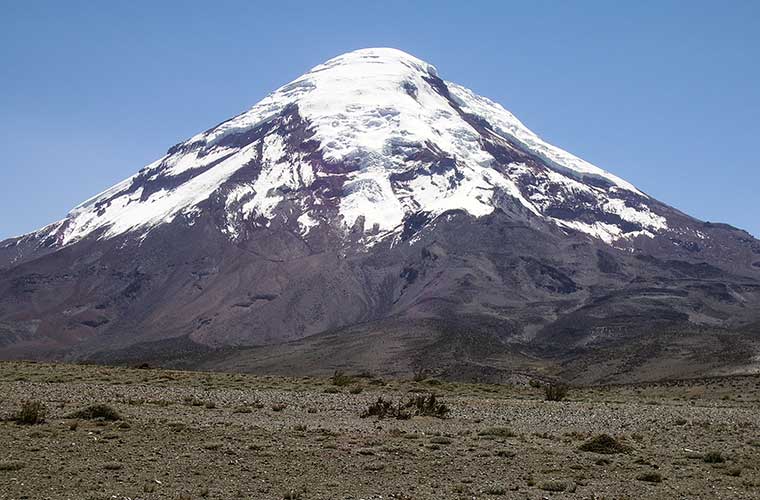
Chimborazo is the highest mountain in Ecuador. It is located in the central Andes, and the reference city for its ascent is the city of Riobamba, 150 km southwest of Quito.
The ascent of the Chimborazo volcano is not very technical, but being in the high mountains above 6,000 metres and having to progress on glaciers makes it very difficult. You will need experience in the use of crampons and ice axes, in glacier progression, and here safety techniques also come into play, as well as roping for walking on glacier terrain where a crevasse may surprise you, and of course, in addition to all this, you will need to do the physical activity at altitude.
It has two huts: the Carrel hut at 4850 metres and the Whymper hut at 5000 metres. The most classic ascent routes are on the southwest slope: the Normal route, the Whymper route and the Directísima route.
- READ ALSO: Chimborazo: climbing volcanoes in Ecuador
Kilimanjaro (5,895 m): Tanzania "
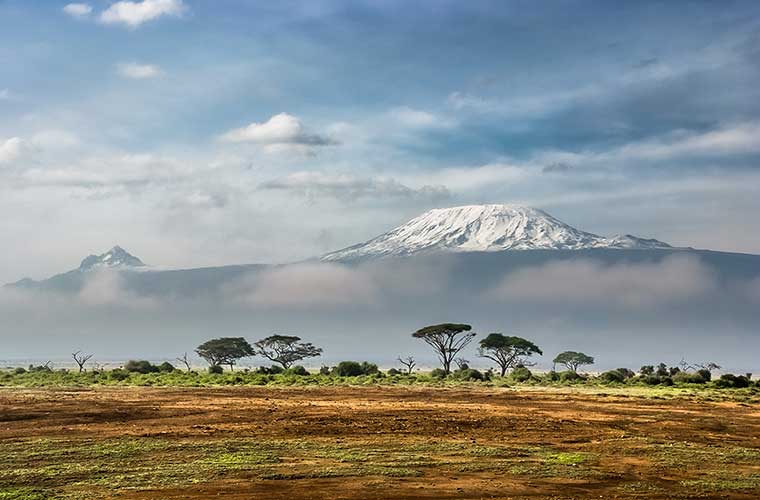
Snow-capped Kilimanjaro, floating above the clouds, is undoubtedly one of the most beautiful and impressive sights to be found. Even non-believers, in their careless moments, identify with the Maasai who call it the "House of God". It is on the list of the seven highest mountains on every continent, being the highest point on the African continent. Kilimanjaro is also popularly known as the highest free-standing mountain in the world, which does not belong to any mountain range. It rises gently from 900 m, reaches the heavens and only stops after an ascent of 5,895 m. The diameter at the base is 64,000 mm. The diameter at the base is 64 kilometres.
This is a volcano with three peaks, located in the northeast of the Republic of Tanzania, a few kilometres from the Kenyan border. On the way up, we will go from rainforest and savannah to alpine landscapes and finally to the glacier. The ascent routes include the Marangu Route, the Machame, Lemosho, Rongai and the Umbwe Route.
- READ ALSO: Kilimanjaro: the trekking of Tanzania
Teide (3.718 m), Canary Islands
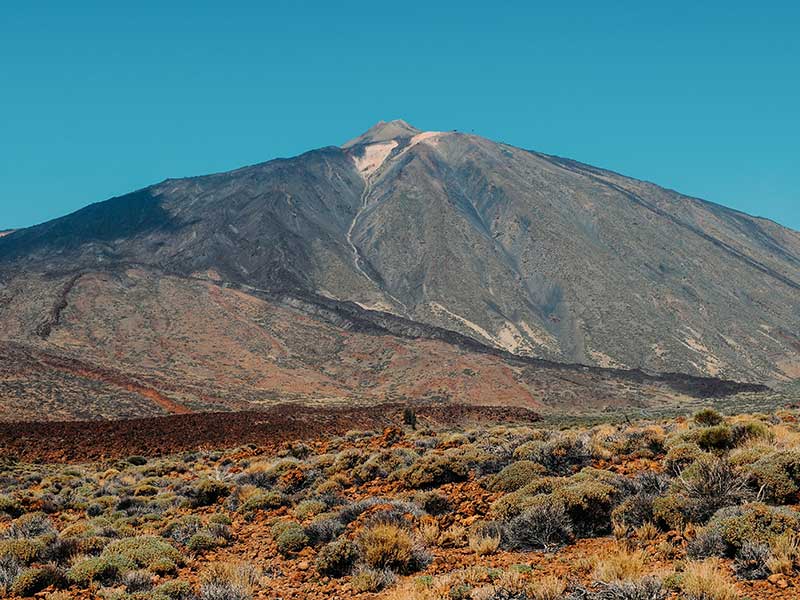
With its 3,718 metres above sea level, Teide is the highest peak in Spain. In 1954, both Teide and its entire perimeter were declared Teide National Park, and in 2007 it was declared a World Heritage Site.
- READ ALSO: Teide National Park: Cañadas, the foothills and cliffs of the caldera at the foot of the volcano.
The ascent to the summit can be made via Montaña Blanca, close to the road (6h). Another option is to do part of the route by cable car: in a few minutes you can go up to La Rambleta at 3,555 metres. From this point take the Telesforo Bravo path to reach the summit (200m). You need a permit (click hereAnd so that you can climb the Teide in a different way we leave you here the videos of Iñigo. Teide 0-4-0: the conquest of the colossus (Part 1 / Part 2)
Eyjafjallajokull: Iceland
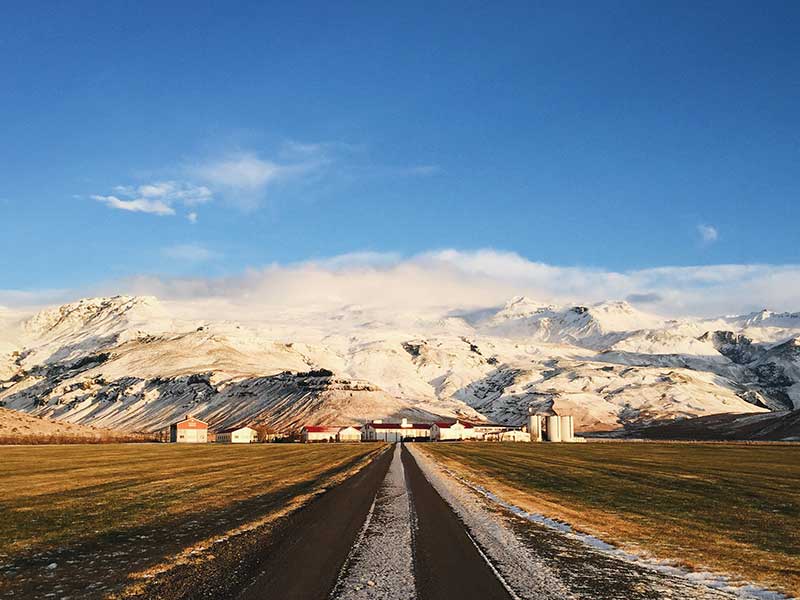
The Eyjafjallajökull volcano became so famous for its eruption in 2010 that air traffic was shut down all over Europe due to the volcanic ash it spewed into the atmosphere that air traffic was shut down all over Europe.
The volcano trail takes visitors on a hike that takes in a variety of incredible scenic landscapes including snow, ash from the volcano's most recent eruptions and ice. The trail starts at sea level, and runs through crevassed glacier terrain, so although it is not an extremely complicated route, it does pose risks. Glacier progression equipment such as crampons and ice axe are required to reach the summit.
Mt. Pelee: Martinique
![Mount Pelée / Photo: Eugénie Peigné [CC-BY-SA-3.0] via Wikimedia Commons](https://travesiapirenaica.b-cdn.net/wp-content/uploads/2019/02/Monte-Pelée_by-Eugénie-Peigné-CC-BY-SA-3.0-Wikimedia-Commons_800x600.jpg)
Mt. Pelee is a volcano located on the island of Martinique, located north of St. Lucia, in the Caribbean Sea. Its 1902 eruption completely destroyed the city of St. Pierre, killing approximately 30,000 people.
Ironically, the only survivor was a prisoner who was saved because he was in his poorly ventilated cell. The volcano is a total of 1,397 m high and the ascent route takes approximately 2-4 hours, depending on the climber's fitness level. It is a very popular trail that includes a steep descent into the muddy crater of the volcano.
Mount Fuji: Japan
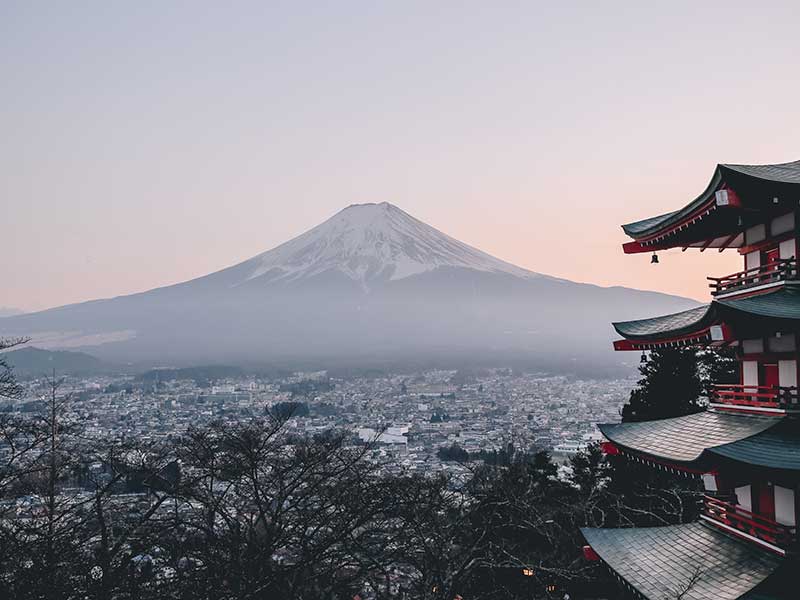
It is the volcano with the highest peak in the country and is made up of what are known as the "three holy mountains". Many tourists and mountaineers make the ascent of the volcano every year, according to government figures, more than 200,000 tourists a year.
The last eruption of Mount Fuji took place in 1707 and spread its ashes to what is now the capital Tokyo, forming a new crater on the eastern flank. It is recommended to hike the route in the months of July to September, as this is the official climbing season and the mountain's various facilities are open.
Cerro Chato: Costa Rica
![Cerro Chato crater and lake / Photo: Lars0001 [Public-domain] via Wikimedia Commons](https://travesiapirenaica.b-cdn.net/wp-content/uploads/2019/02/Cerro_chato_crater_lago_by-Lars0001-Public-domain-from-Wikimedia-Commons_800x600.jpg)
Cerro Chato offers all visitors a unique experience: taking a dip in a volcano. It is located in the rainforest, so be prepared for the possibility of continuous rain. If you're willing to deal with the steep slopes and tropical rain, the reward of swimming in a volcanic crater is worth it. Don't worry, the volcano hasn't erupted in over 3,500 years. The hike takes about 4 to 5 hours.
Villarica Volcano: Chile

This volcano perfectly reflects what we tend to instantly think of when we imagine a volcano: a stereotypical snow-covered cone shape with smoke rising from the perfectly symmetrical peak. It is located in the vicinity of the Chilean town of Pucón. The volcano is 2,847 m high.
The hike takes about 5 hours and the terrain gradually changes from dry to icy and snowy. Visitors appreciate above all the fact that, although the magma of the volcano is often not visible, the sound of dripping magma is unmistakable. An incredible experience indeed.
Telica Volcano: Nicaragua "
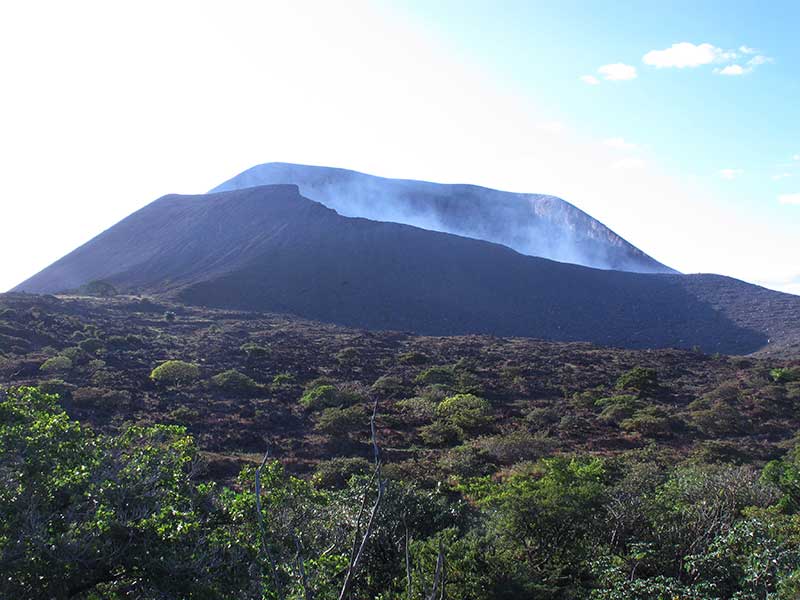
The presence of volcanic activity in Nicaragua is very common, however, Telica volcano stands out as the best for hiking activities. Most of the trail tends to be flat, through farmland and over dirt roads. It is only in the last hour or two that you finally start walking to the top.
It is recommended that you arrange your time to camp at the top, as seeing the lava at night is something special and the sunrise in the morning is truly spectacular.
- READ ALSO: Telica Volcano - Nicaragua
Don't miss any adventure in the Pyrenees!
